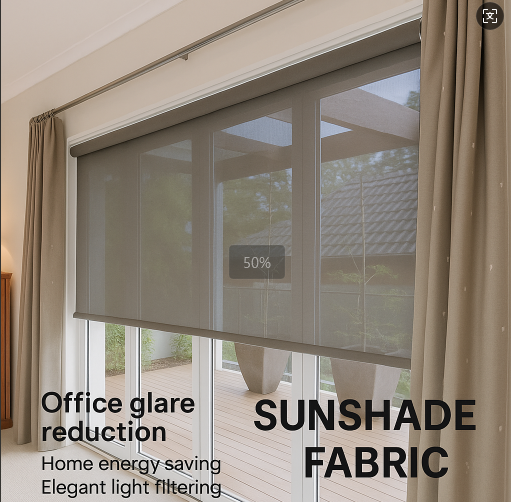English
Sunshade fabrics create a sun-protective barrier through special weaving techniques, with their core processes divided into three layers:

Polyester fiber or glass fiber is chosen for their excellent UV resistance, acting like a "sun-protective coat" for the fabric.
- High-Density Plain Weave: Forms a dense protective layer, similar to the principle of shutters. Precise arrangement of warp and weft yarns filters sunlight.
- Double-Layer Structure (for premium fabrics):
- Bottom layer (twill weave): Ensures strength.
- Surface layer (satin weave): Creates a smooth reflective surface.
Together, they achieve physical sun protection.
- Coating Technology: Incorporates nano-grade titanium dioxide (TiO₂) into fibers. This ingredient, commonly used in sunscreen, forms a "reflective shield" on the fabric surface.
- UV Resistance Additives: Bond permanently with fibers via high-temperature setting, ensuring long-lasting sun protection.
- Waterproof Coating (for outdoor use): Adds an all-weather protection layer.
These techniques combine to enable modern sunshade fabrics to block over 90% of UV rays while maintaining breathability—like a "breathable sun-protective coat" for buildings. From home curtains to outdoor canopies, technological weaving is redefining our relationship with sunlight.